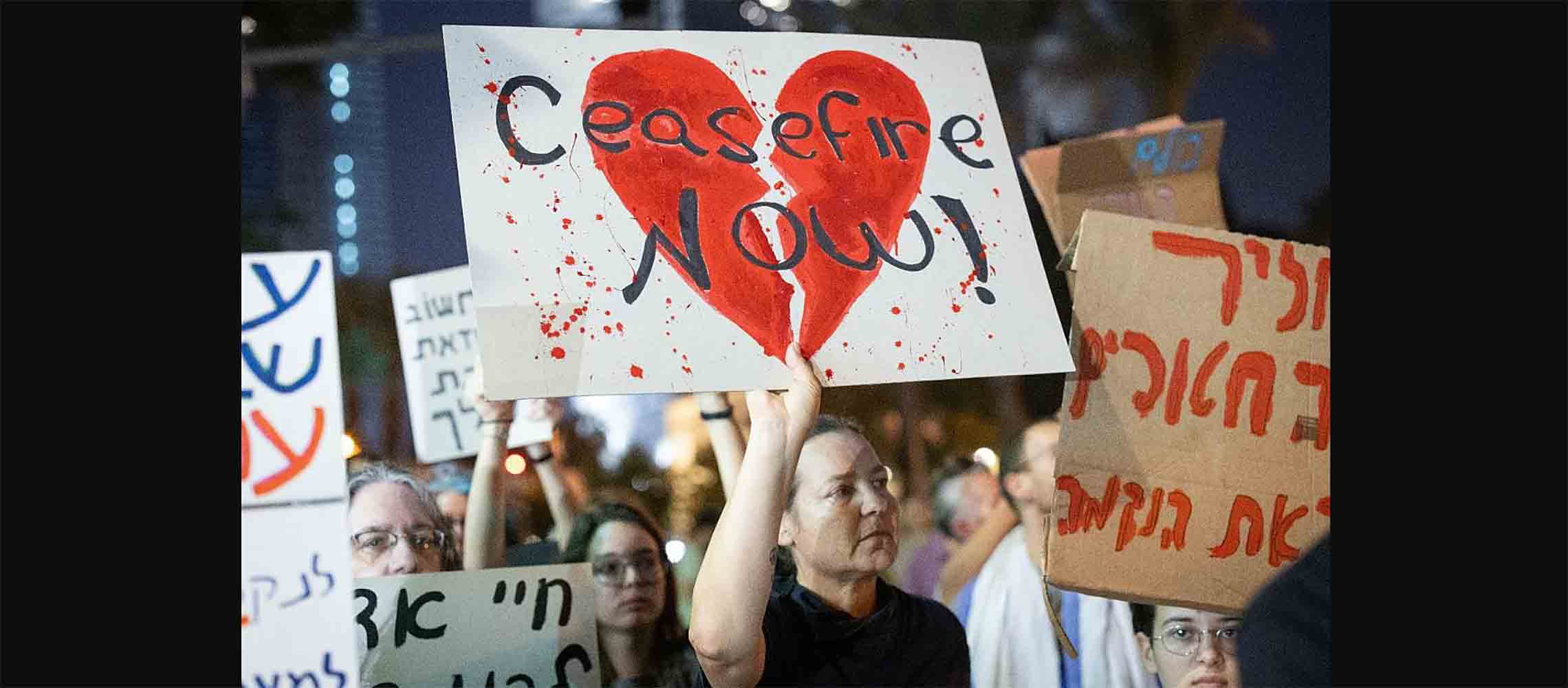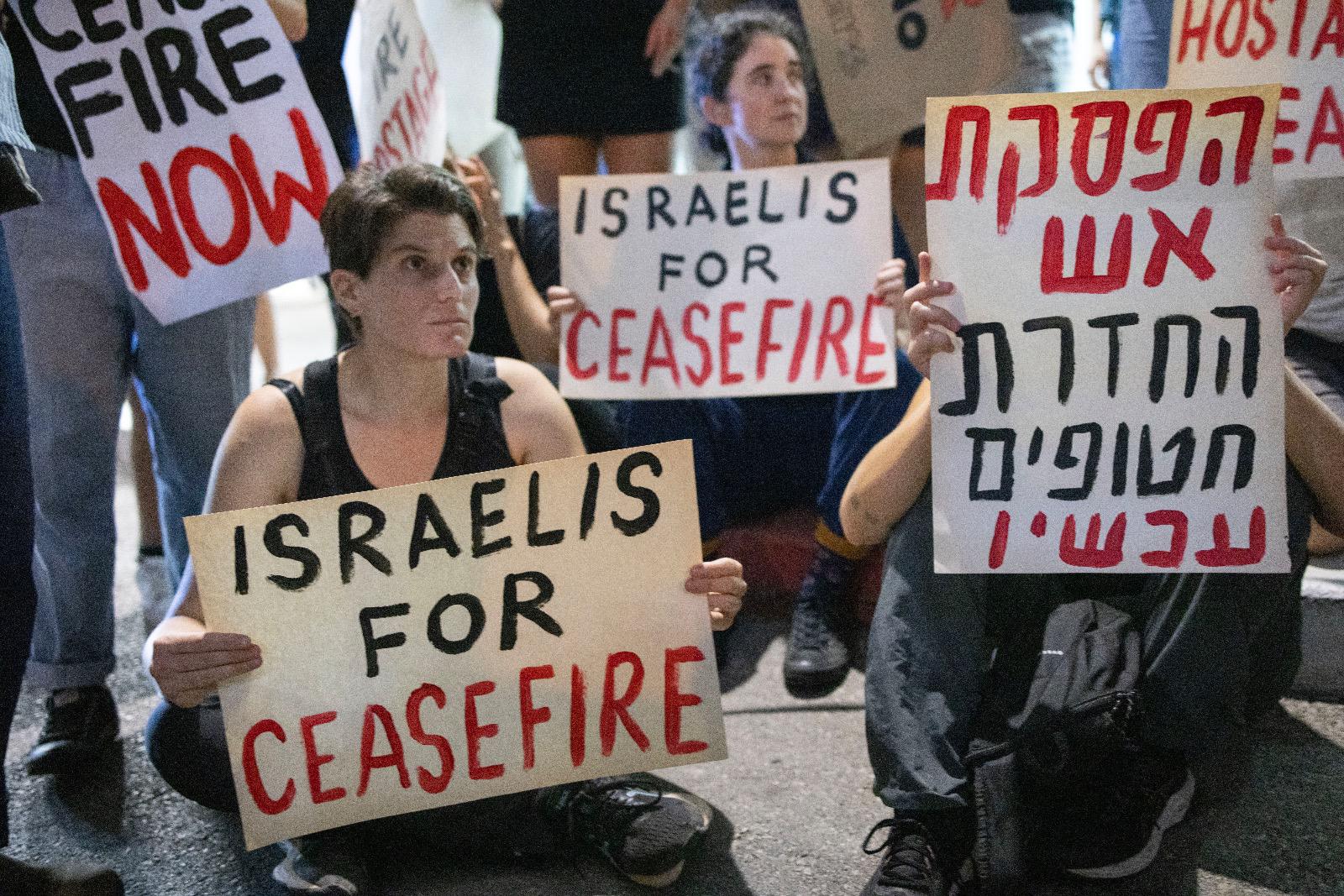
by Orin Ziv at +972 Magazine
Last Saturday evening, for the first time since the Oct. 7 Hamas attack on southern Israel and the start of Israel’s bombardment of the Gaza Strip, a few dozen Israelis gathered in Tel Aviv to call for a ceasefire. In the current atmosphere of violence, repression, and persecution, any public act of defiance against the war is noteworthy.
The protesters gathered in front of the Israeli military headquarters on Kaplan Street, where, until the war began, tens of thousands of anti-government protesters had been amassing every Saturday night since January. A few hundred meters away, the families of those who were abducted to Gaza held a separate protest following a meeting with Israeli Prime Minister Benjamin Netanyahu; at the meeting and the subsequent demonstration, they demanded that Israel pursue the release of all the hostages in Gaza in exchange for the release of all Palestinians held on security charges in Israeli prisons — a deal being labeled “all for all” — which Hamas has intimated to be the group’s terms for any major agreement.

During each of Israel’s previous assaults on Gaza, internal dissent has carried a significant price, with protesters often facing arrests and beatings by police. And repression comes not only from the state: in 2014, when Israel last invaded Gaza with ground troops, hundreds of activists from the fascist group La Familia attacked an anti-war demonstration in Tel Aviv, while police stood by…
Continue Reading